With my appetite for admiring Italian motoring heritage wetted by the event in Bristol, I headed off to Brooklands last Saturday for a similar event, organised by “Auto Italia” magazine. This is one of three large gatherings of Italian cars that they organise around the country, and I expected that, as this is in the London area and the last of their events which I attended was in Gaydon, it was quite likely that there would be some different machinery on display. And so it proved to be. There were a few cars that I had seen before, and even a few that had been in Bristol the previous weekend, but most were different, many were rare, and overall, they presented a pretty comprehensive showing of Italian motoring heritage right up to the present day. Brooklands is an interesting venue to choose. Not only is the site replete with history, but there are lots of different areas of the site from the paved forecourt to the main building, to the grass surrounding the various aircraft on display, and what remains of the banking. All were in use, and were crammed with cars. There were a couple of opportunities for owners to take their cars up the old test hill, and so this meant that a number of the cars moved around during the day. In the best traditions of an event like this, people came and went all day long, too, so there was always something new to see even on returning to an area of the site for the third or fourth time.

The test hill event drew the crowds – and who can be surprised. Starting off at 1 in 8, the gradient increases half way up to 1 in 4, and the top of the hill requires a sharp right hand turn, so the trick seemed to be to get sufficient momentum to cope with the steep incline, but if you had too much, to back off as you neared the summit. Some drivers, with cars endowed with lots of torque just changed up early and let the torque pull up, a few did the whole thing in bottom gear, and others had the challenge of trying to execute a fast downchange when they ran out of steam. All the cars that attempted it did make the summit – some less easily than others!
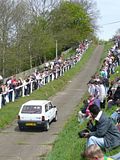
And so, onto the display cars:
ALFA ROMEOAlfa started making volume road cars only in the 1950s, and even then their sporting heritage was very evident. These two examples are testament to that: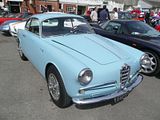
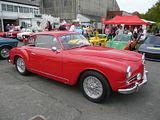 By the early 1960s, a larger model had been introduced, Initially fitted with a 2000cc engine, this was later enlarged to 2600cc. Here is a 2600 Spider from the early 1960s.
By the early 1960s, a larger model had been introduced, Initially fitted with a 2000cc engine, this was later enlarged to 2600cc. Here is a 2600 Spider from the early 1960s.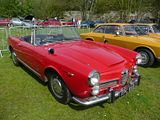 More popular were the 105 series cars, which spawned a large number of variations over the model’s life.
More popular were the 105 series cars, which spawned a large number of variations over the model’s life.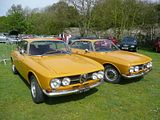
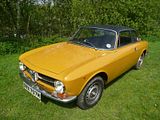 Plenty of examples of the long-running Spider were on show, of course:
Plenty of examples of the long-running Spider were on show, of course: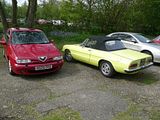
 No examples of the AlfaSud saloon were present at all, which I found slightly surprising, but there were several of its coupe brother, the Sprint.
No examples of the AlfaSud saloon were present at all, which I found slightly surprising, but there were several of its coupe brother, the Sprint.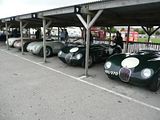
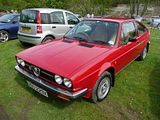
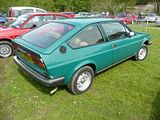
 Replacement for the ‘Sud was the 33. This never quite captured the imagination of the buying public in the same way.
Replacement for the ‘Sud was the 33. This never quite captured the imagination of the buying public in the same way.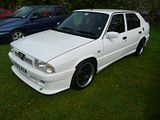
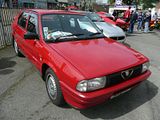 There was even a late model 33 Giardinetta model:
There was even a late model 33 Giardinetta model: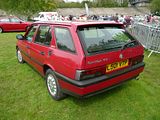
 The larger Alfa of the mid 70s was the Alfetta. An early berlina model was on show:
The larger Alfa of the mid 70s was the Alfetta. An early berlina model was on show: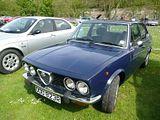 The Giulietta arrived in 1977, positioned slightly below the Alfetta. These are now very rare indeed.
The Giulietta arrived in 1977, positioned slightly below the Alfetta. These are now very rare indeed.
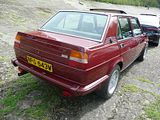 The 75 was launched in 1985, and named in honour of Alfa’s 75th anniversary:
The 75 was launched in 1985, and named in honour of Alfa’s 75th anniversary: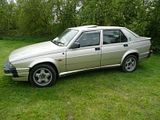
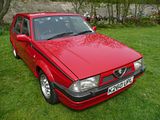 The 145 was launched in 1994 in the hope that it would recreate the magic of the Alfasud, something that the 33 had never achieved. The 145 did not really hit the spot, either, even though the later models were well sorted and fun to drive.
The 145 was launched in 1994 in the hope that it would recreate the magic of the Alfasud, something that the 33 had never achieved. The 145 did not really hit the spot, either, even though the later models were well sorted and fun to drive.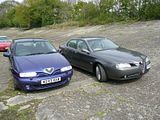
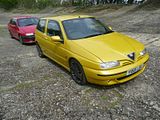

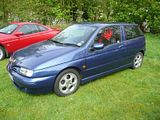
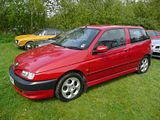 The 146 was the 5 door model, and was completely different from the B pillars rearwards:
The 146 was the 5 door model, and was completely different from the B pillars rearwards: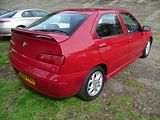 The 147, by contrast, was an instant hit, with its gorgeous styling, and a “Car of the Year” title awarded to it within months of going on sale. Still going strong, 8 years later, it is likely to replaced by something far less elegant, if the spy pictures are to be believed
The 147, by contrast, was an instant hit, with its gorgeous styling, and a “Car of the Year” title awarded to it within months of going on sale. Still going strong, 8 years later, it is likely to replaced by something far less elegant, if the spy pictures are to be believed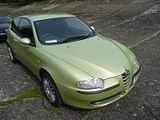
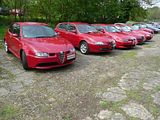
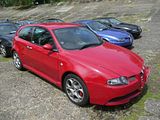
 The Alfa 155 was launched to a very luke warm reaction indeed in 1992. However, a facelifted version really hit the spot, and although sales were not massive, these cars have a real cult following now, and many of them were on show:
The Alfa 155 was launched to a very luke warm reaction indeed in 1992. However, a facelifted version really hit the spot, and although sales were not massive, these cars have a real cult following now, and many of them were on show:
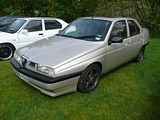 The 156 will go down in history as the car that saved Alfa. Hailed as better than the 3 series BMW, it was a huge success for Alfa, with massive waiting lists for the first 18 months of production. As a very happy owner of one of these cars, I can see why it is still popular now! There was a particularly strong showing of the GTA models, of course.
The 156 will go down in history as the car that saved Alfa. Hailed as better than the 3 series BMW, it was a huge success for Alfa, with massive waiting lists for the first 18 months of production. As a very happy owner of one of these cars, I can see why it is still popular now! There was a particularly strong showing of the GTA models, of course.
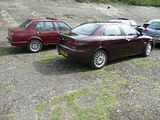
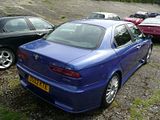
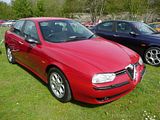
 Following the success of the 156, Alfa hoped for the same with its bigger brother, the 166. Sadly, this did not really happen. The facelift, which in my opinion is one of relatively few cases where the looks improved, came too late and sales in the UK dwindled to nothing within months.
Following the success of the 156, Alfa hoped for the same with its bigger brother, the 166. Sadly, this did not really happen. The facelift, which in my opinion is one of relatively few cases where the looks improved, came too late and sales in the UK dwindled to nothing within months.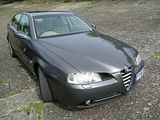
 The RZ:
The RZ: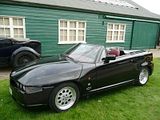 The GTV and Spider launched in 1994 found many fans. As an ex-owner of one, I can see why. Just gorgeous to look at, even now, and with that wondrous Alfa rasp to the exhaust system.
The GTV and Spider launched in 1994 found many fans. As an ex-owner of one, I can see why. Just gorgeous to look at, even now, and with that wondrous Alfa rasp to the exhaust system.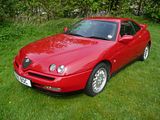

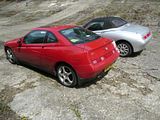 Even more elegant, perhaps, is the contemporary GT. The best looking Alfa on sale at present (barring the rather exclusive 8C):
Even more elegant, perhaps, is the contemporary GT. The best looking Alfa on sale at present (barring the rather exclusive 8C):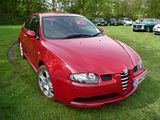
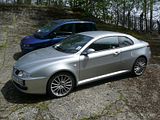 Even the latest cars were part of the display, such as the 159:
Even the latest cars were part of the display, such as the 159: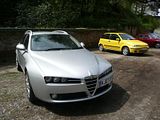
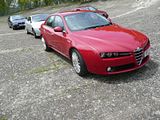 ……. and the Brera:
……. and the Brera: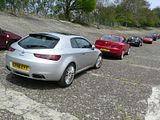 FIAT In the 1930s, the Fiat Balila was a highly desirable and very capable sports car. Just lovely, this example:
FIAT In the 1930s, the Fiat Balila was a highly desirable and very capable sports car. Just lovely, this example: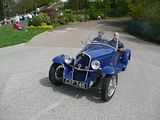
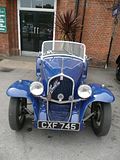
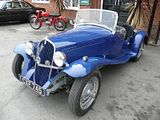 A big display area for the 500, unsurprisingly, with a full range of the “Nuova 500” from 1957 and the latest model all mixed up. The difference in size between the 2 generations is really emphasised when you see them side by side.
A big display area for the 500, unsurprisingly, with a full range of the “Nuova 500” from 1957 and the latest model all mixed up. The difference in size between the 2 generations is really emphasised when you see them side by side.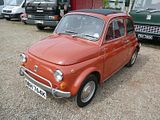
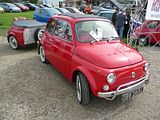

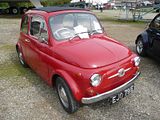
 The 500 first arrived in the 1930s, and was the car that put Italy on the road. Literally. Nicknamed the “Topolino”, there were three generations of this car, and 2 different examples were on show.
The 500 first arrived in the 1930s, and was the car that put Italy on the road. Literally. Nicknamed the “Topolino”, there were three generations of this car, and 2 different examples were on show.
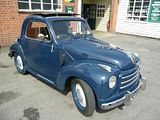 Like many in the crowd, I was impressed to see this later car make it up the Test Hill. Only just, though. I really did think that he was going to reverse all the way down after it appeared to lose all momentum near the top of the hill. A special version of the 500, sometimes nicknamed the “Noddy Car” was this Gamine Speciale:
Like many in the crowd, I was impressed to see this later car make it up the Test Hill. Only just, though. I really did think that he was going to reverse all the way down after it appeared to lose all momentum near the top of the hill. A special version of the 500, sometimes nicknamed the “Noddy Car” was this Gamine Speciale: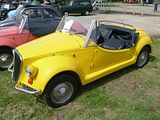
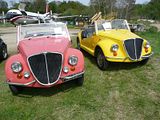 This 1960 600 was given a special treatment by coachbuilder Viotti
This 1960 600 was given a special treatment by coachbuilder Viotti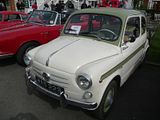 The 850 Coupe was very popular in the late 1960s, especially with women, who wanted something stylish as “their” car, which in many cases was a second car on the household.
The 850 Coupe was very popular in the late 1960s, especially with women, who wanted something stylish as “their” car, which in many cases was a second car on the household.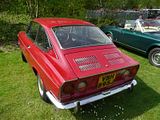
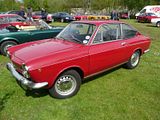 Also based on the 850 was this, the 900T, a sort of early MPV, I suppose you could say:
Also based on the 850 was this, the 900T, a sort of early MPV, I suppose you could say: A very rare car, the 2300 Berlina. I think this particular car was featured in Classic and Sports Car a while back – though it had no nodding dog in the rear windown when featured!
A very rare car, the 2300 Berlina. I think this particular car was featured in Classic and Sports Car a while back – though it had no nodding dog in the rear windown when featured!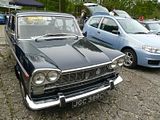
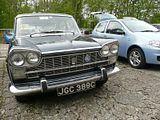
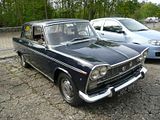
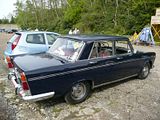
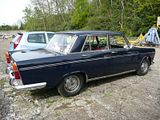 I’ve always had a very soft spot for this car, the 130 Berlina. Launched in 1969, it never sold that well outside Italy, but for understated elegance, I think it still looks terrific. A rare sighting indeed now.
I’ve always had a very soft spot for this car, the 130 Berlina. Launched in 1969, it never sold that well outside Italy, but for understated elegance, I think it still looks terrific. A rare sighting indeed now.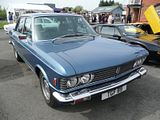
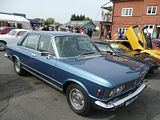
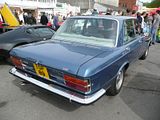
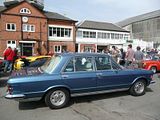
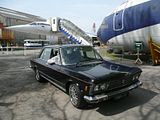
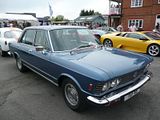 The 130 Coupe has far more of a following these days. I was amazed to see that this car was pressed into service at the end of the event as a tow car!
The 130 Coupe has far more of a following these days. I was amazed to see that this car was pressed into service at the end of the event as a tow car!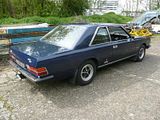
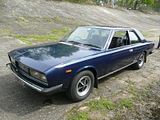
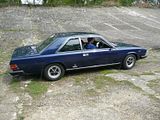
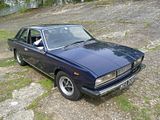 Of course, the Dino was well represented, including some cars I had not seen before:
Of course, the Dino was well represented, including some cars I had not seen before: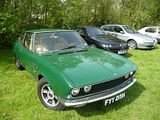 Intended as a smaller brother to the Dino was the X1/9, a car which retained its code name into production:
Intended as a smaller brother to the Dino was the X1/9, a car which retained its code name into production: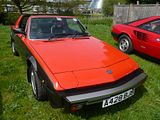 The rather rapid racing version was also on show:
The rather rapid racing version was also on show: The 124 Coupe – here in the final Mark 3 “CC” guise:
The 124 Coupe – here in the final Mark 3 “CC” guise: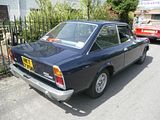 Sole representative of the landmark 127 range was this Sport model:
Sole representative of the landmark 127 range was this Sport model: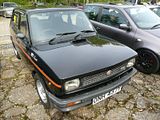 A lone example of the 126:
A lone example of the 126: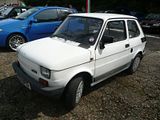 The 131 Mirafiori was the Italian Cortina in its time……… few survive, and most that do are the Sport model introduced in October 1978, most of which were delivered in brilliant orange, like this one
The 131 Mirafiori was the Italian Cortina in its time……… few survive, and most that do are the Sport model introduced in October 1978, most of which were delivered in brilliant orange, like this one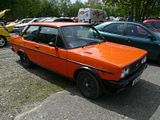 Having been surprised to see not one, but two of the 128 3P cars in Bristol, it was agreeable to see them again here, and then to discover a third car on show as well:
Having been surprised to see not one, but two of the 128 3P cars in Bristol, it was agreeable to see them again here, and then to discover a third car on show as well:

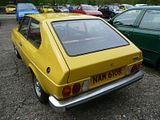 Successor to the 128 was the Ritmo, known in the UK as the Strada. Popular in its day, I recently learned that fewer than 75 of these cars remain. On recent evidence, I will soon have seen them all, I think. Here are the ones that were at this event:
Successor to the 128 was the Ritmo, known in the UK as the Strada. Popular in its day, I recently learned that fewer than 75 of these cars remain. On recent evidence, I will soon have seen them all, I think. Here are the ones that were at this event: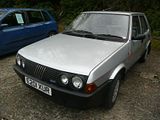

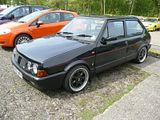
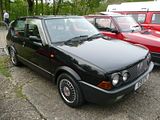 Also pretty rare now is the Tipo:
Also pretty rare now is the Tipo: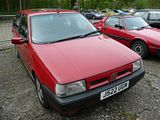
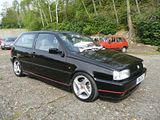 The original Fiat Panda was a massive success for Fiat, with over 5 million cars built in its long life time:
The original Fiat Panda was a massive success for Fiat, with over 5 million cars built in its long life time: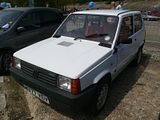 There were a few Uno’s on show, including this SX model:
There were a few Uno’s on show, including this SX model: The Punto is now in its third generation. Sadly, most of the first generation cars on show had been modified – and they were so gruesome that my camera just could not look at them!
The Punto is now in its third generation. Sadly, most of the first generation cars on show had been modified – and they were so gruesome that my camera just could not look at them!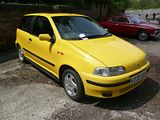

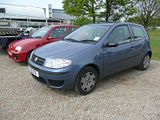
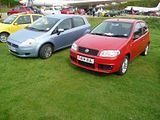
 Now it is out of production, the true merit of the Barchetta seems to be coming to the fore. Good though the MX5 is, I am sure that one of these has buckets more character!
Now it is out of production, the true merit of the Barchetta seems to be coming to the fore. Good though the MX5 is, I am sure that one of these has buckets more character! Car of the Year in 1995 was the Bravo/Brava:
Car of the Year in 1995 was the Bravo/Brava: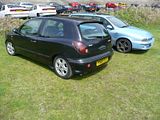 This range was then augemented with the saloon and estate versions called Marea:
This range was then augemented with the saloon and estate versions called Marea: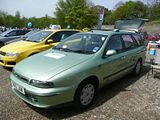
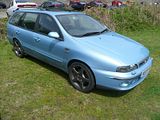 Not a sales success, the Stilo seems to have a following already, especially for the three door model, and many of these were in attendance.
Not a sales success, the Stilo seems to have a following already, especially for the three door model, and many of these were in attendance. There was a huge long line of Fiat Coupe models. Many of these seem to have been “improved”………..
There was a huge long line of Fiat Coupe models. Many of these seem to have been “improved”………..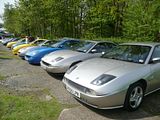
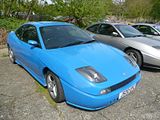
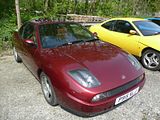
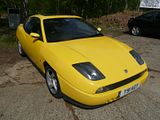 Finally, mention must be made of the Cinquecento, and here we spotted a car familiar to “The Motor”……………. Pete, the “KUM bucket” is alive and well, you will be delighted to see!
Finally, mention must be made of the Cinquecento, and here we spotted a car familiar to “The Motor”……………. Pete, the “KUM bucket” is alive and well, you will be delighted to see!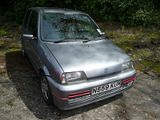 LANCIA The Appia was a long-lived entry level model, launched in the early 1950s, and which survived until the 1963 launch of the Fulvia. These cars were very costly, especially with the addition of Import Duty, so only ever sold in small numbers in the UK, but it was great to see this immaculate example of a late model on show:
LANCIA The Appia was a long-lived entry level model, launched in the early 1950s, and which survived until the 1963 launch of the Fulvia. These cars were very costly, especially with the addition of Import Duty, so only ever sold in small numbers in the UK, but it was great to see this immaculate example of a late model on show:
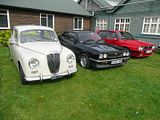

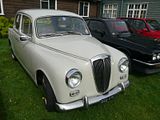
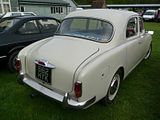 The late 1950s saw a range topper called Flaminia launched. Complementing the berlina models were some stylish coupe and convertibles, such as this:
The late 1950s saw a range topper called Flaminia launched. Complementing the berlina models were some stylish coupe and convertibles, such as this: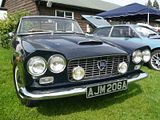 The Fulvia range included a very elegant Coupe model, which started out with just as 1200cc engine. Subsequent iterations had 1300 and 1600 engines, and the car was developed into a successful rally car.
The Fulvia range included a very elegant Coupe model, which started out with just as 1200cc engine. Subsequent iterations had 1300 and 1600 engines, and the car was developed into a successful rally car.
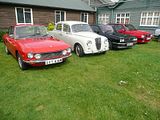
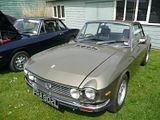
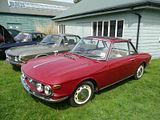 Mainstay of the Lancia range in the 1970s, and the car that killed the reputation in 1980, was the Beta. The HPE was very popular as a sporting hatchback, but by the time this Volumex, supercharged, model was on offer the damage of the rust scandal was done, and sales were paltry. A pity.
Mainstay of the Lancia range in the 1970s, and the car that killed the reputation in 1980, was the Beta. The HPE was very popular as a sporting hatchback, but by the time this Volumex, supercharged, model was on offer the damage of the rust scandal was done, and sales were paltry. A pity.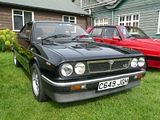 There was an elegant coupe model, as well:
There was an elegant coupe model, as well: Although initially intended to be badged as a Fiat, the MonteCarlo was also part of the Beta family.
Although initially intended to be badged as a Fiat, the MonteCarlo was also part of the Beta family.
 There were countless models of the Delta Integrale on show, unsurprisingly
There were countless models of the Delta Integrale on show, unsurprisingly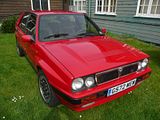
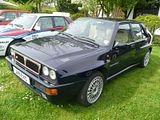
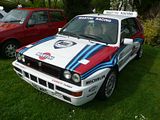
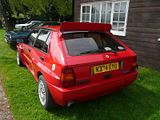
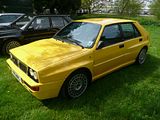
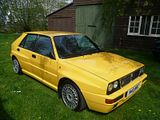
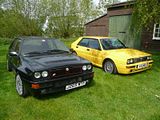
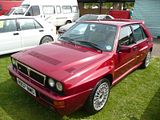 Sold in small quantities in the early 1980s was this, the Prisma, introduced when many manufacturers decided that perhaps hatchbacks were not the universal answer for all their customers
Sold in small quantities in the early 1980s was this, the Prisma, introduced when many manufacturers decided that perhaps hatchbacks were not the universal answer for all their customers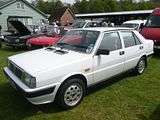 Follow on to this was the Dedra.
Follow on to this was the Dedra.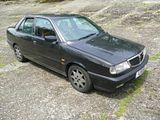 Badged as a Lancia in the UK market, theY10 was a replacement for the long-lived Autobianchi A112. Examples of both were on show
Badged as a Lancia in the UK market, theY10 was a replacement for the long-lived Autobianchi A112. Examples of both were on show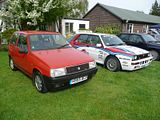
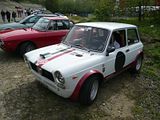
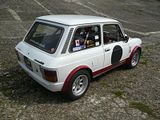 The Gamma Coupe:
The Gamma Coupe: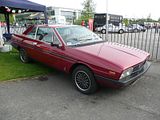
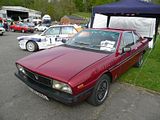 The Thema was once decently popular in the UK. It was Lancia’s version of the Type 4 cars that also spawned the Saab 9000, original Fiat Croma and the glorious Alfa 164. This is the facelifted model:
The Thema was once decently popular in the UK. It was Lancia’s version of the Type 4 cars that also spawned the Saab 9000, original Fiat Croma and the glorious Alfa 164. This is the facelifted model: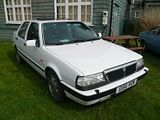
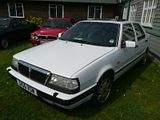
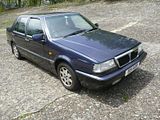 ABARTH These days, Abarth is simply a badge used to denote “hotter” Fiats, but in the early 1960s, they had their own range of cars. Here are two: The 2200 Convertible
ABARTH These days, Abarth is simply a badge used to denote “hotter” Fiats, but in the early 1960s, they had their own range of cars. Here are two: The 2200 Convertible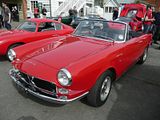
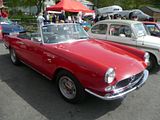 The 750 Zagato
The 750 Zagato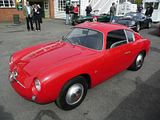 OM One of the oldest cars on display was this:
OM One of the oldest cars on display was this: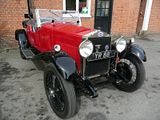
FERRARI One of the oldest Ferraris on show was this 250GT: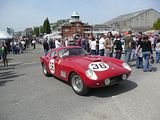 Next oldest Ferrari was this 330 GTC from the late 1960s:
Next oldest Ferrari was this 330 GTC from the late 1960s: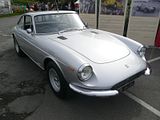 No-one is ever quite sure whether a true Ferrari should have 4 seats or not, but there is usually one such model in the range at any given time. The Dino 308 GT4:
No-one is ever quite sure whether a true Ferrari should have 4 seats or not, but there is usually one such model in the range at any given time. The Dino 308 GT4: There were 7 different cars from the 365GT/400/512 range on show:
There were 7 different cars from the 365GT/400/512 range on show: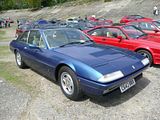
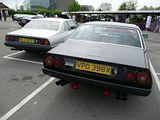 The 456GT:
The 456GT: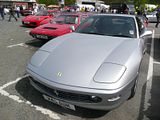 All the iterations of the Testarossa were on show:
All the iterations of the Testarossa were on show:
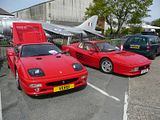 Sometimes looked at slightfully scornfully is the Mondial, and yet it too has it supporters these days:
Sometimes looked at slightfully scornfully is the Mondial, and yet it too has it supporters these days: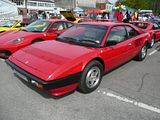

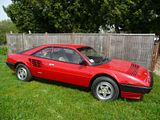 Large numbers of the F355 were on show………. a real case of a remarkable transformation from the not that elegant or competent 348 into this:
Large numbers of the F355 were on show………. a real case of a remarkable transformation from the not that elegant or competent 348 into this: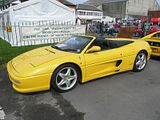
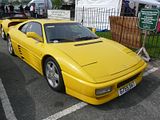
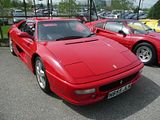 Follow on to this car was the 360 Modena:
Follow on to this car was the 360 Modena: Object of many a boy’s dream in the 1970s was the Berlinetta Boxer, such as this one:
Object of many a boy’s dream in the 1970s was the Berlinetta Boxer, such as this one: The 550 Maranello:
The 550 Maranello: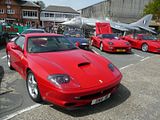 The 575, in rare convertible form:
The 575, in rare convertible form: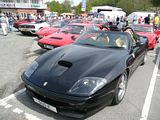 There were a couple of F40s on show. One made an early, and noisy exit. These cars were attracting far less attention than you might expect, with all the focus going on the later extreme Ferraris.
There were a couple of F40s on show. One made an early, and noisy exit. These cars were attracting far less attention than you might expect, with all the focus going on the later extreme Ferraris.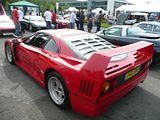

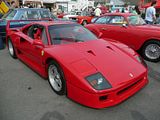
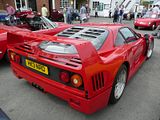
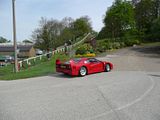 There was an F50, too:
There was an F50, too: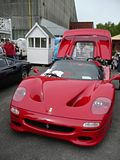 There were, not surprisingly, big crowds around the Enzo all day. Not exactly a pretty car, for sure, but one with tremendous presence.
There were, not surprisingly, big crowds around the Enzo all day. Not exactly a pretty car, for sure, but one with tremendous presence.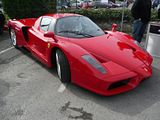
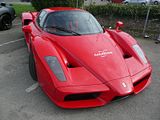

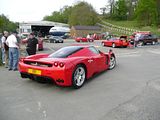
MASERATI Despite a long heritage in racing cars, it was not until the late 1950s that Maserati offered a road car. The 3500GT range in the early sixties exemplified the Italian penchant for producing grand tourers: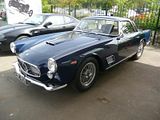
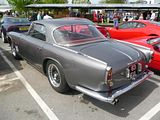 Dating from the late 1960s was this Mexico. A beautifully detailed grand tourer, which really did have ample space for 4 people, and a decent-sized boot, which would allow its lucky occupants to rush across countries in speed and luxury.
Dating from the late 1960s was this Mexico. A beautifully detailed grand tourer, which really did have ample space for 4 people, and a decent-sized boot, which would allow its lucky occupants to rush across countries in speed and luxury.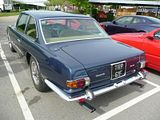
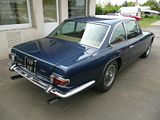
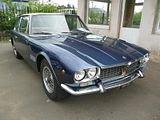 During the late 1970s, Maserati was in dire neeed of new models, and they managed to come up with something by slotting their own engine into the existing de Tomaso Longchamps body, to come up with this, the Kyalami.
During the late 1970s, Maserati was in dire neeed of new models, and they managed to come up with something by slotting their own engine into the existing de Tomaso Longchamps body, to come up with this, the Kyalami.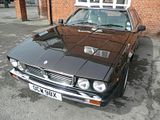 In 1982, all the existing models were discontinued and the Biturbo was launched. For the next 15 years, a bewildering array of different models appeared, with different engines, body styles and even names.
In 1982, all the existing models were discontinued and the Biturbo was launched. For the next 15 years, a bewildering array of different models appeared, with different engines, body styles and even names.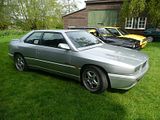
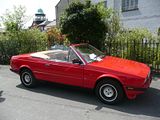 Maserati’s fortunes and reputation were rescued with the 3200GT.
Maserati’s fortunes and reputation were rescued with the 3200GT.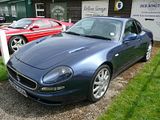 The very latest model, the Gran Turismo was there, too:
The very latest model, the Gran Turismo was there, too: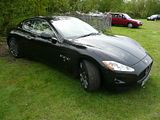 LAMBORGHINI Following his success at making tractors, Ferruccio Lamborghini decided to make a car to rival Ferrari. The result was the 350GT, launched in 1963. With a larger engine, this car became the 400GT, like this 1967 model:
LAMBORGHINI Following his success at making tractors, Ferruccio Lamborghini decided to make a car to rival Ferrari. The result was the 350GT, launched in 1963. With a larger engine, this car became the 400GT, like this 1967 model: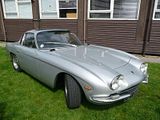
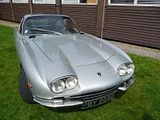
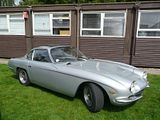 In 1973, Lamborghini showed a cheaper, less powerful car, the Uracco, and a couple of these were in attendance:
In 1973, Lamborghini showed a cheaper, less powerful car, the Uracco, and a couple of these were in attendance: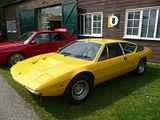
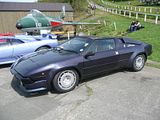 A good number of Countach to see:
A good number of Countach to see: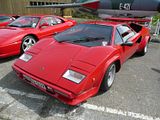
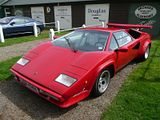
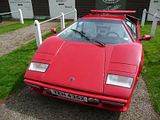
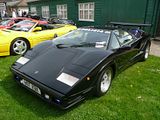
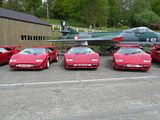
 The later Diablo was also well represented:
The later Diablo was also well represented: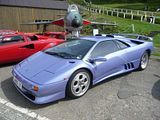 An Italian plated Gallardo Superleggera:
An Italian plated Gallardo Superleggera:
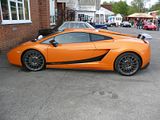
DE TOMASO The Mangusta looks as dramatic now as did when launched in the mid 1960s – Italian style with a large American V8 engine!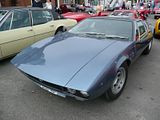
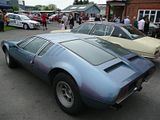 Last model produced before the MG-Rover acquisition was this, the Guara.
Last model produced before the MG-Rover acquisition was this, the Guara.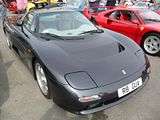
 ISO This Fidia saloon from the mid 70s looked almost out of place, with its oh-so-period vinyl roof:
ISO This Fidia saloon from the mid 70s looked almost out of place, with its oh-so-period vinyl roof: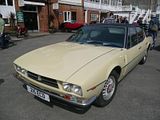
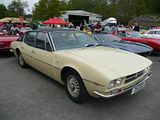
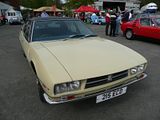 And finally…………. a couple of things which were not exactly Italian car, but with strong links to Italy:
And finally…………. a couple of things which were not exactly Italian car, but with strong links to Italy:
MONTEVERDI The 375L High Speed: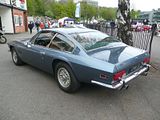
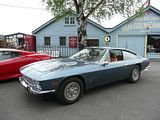
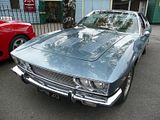 ……….. and who can complain at this at any event. regardless of the theme? A rare sighting of 6 Citroen SM parked up!
……….. and who can complain at this at any event. regardless of the theme? A rare sighting of 6 Citroen SM parked up!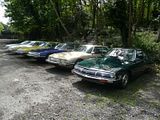
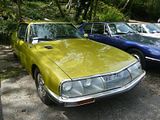

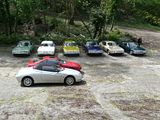
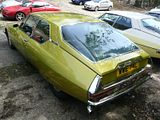
2010-01-01 15:54:03




























































































































































































































